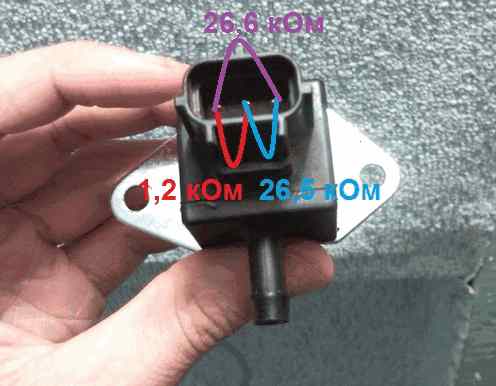
How to replace the injector control pressure sensor
Diesel engines are known for their durability and economy. Because they use a much higher compression ratio than gasoline engines, they tend to be of a more robust design. Diesel engines often go hundreds of thousands of miles on scheduled maintenance. Later diesel engines have more electronic controls to run more efficiently and meet tougher emission standards.
One of the additional control functions is the IC pressure sensor or nozzle control pressure sensor. The ECU (engine control unit) relies on fuel pressure readings from pressure sensor IC to operate at peak efficiency. Symptoms of a faulty IC pressure sensor include: hard starting, reduced power, and a check engine light on.
Part 1 of 1: Replacing the IC pressure sensor
Necessary materials
- Code reader
- Shop rags
- Sockets/ratchet
Keys - open / cap
Attention: Any fuel is combustible. Be sure to operate the vehicle in a well-ventilated area.
Step 1: Turn off the fuel supply. Since the IC pressure sensor is usually located on the unit injector or fuel rail, the fuel system must be depressurized before the sensor can be removed.
On some vehicles, removing the fuel pump fuse may help. With others, you can disable the fuel pump switch. The switch is usually located inside the vehicle. It can be on the driver's side next to the brake and accelerator pedals, or on the passenger side behind the kick panel.
Step 2: Relieve pressure in the fuel system. Turn the engine over after turning off the power.
It will run and splatter for a few seconds as it uses up all the pressurized fuel in the system and then stalls. Switch off the ignition.
Step 3: Access the pressure sensor IC. The IC pressure sensor may be covered by objects such as an air filter housing or an air duct.
Carefully remove all items to access it.
Step 4: Remove pressure sensor IC. Carefully disconnect the electrical connector.
Place one or two rags under and around pressure sensor IC. Even if you have depressurized the system, some fuel may still leak out. Using a socket or wrench, whichever works best, carefully remove the sensor.
Step 5: Install the new pressure sensor IC. Lubricate the sensor's replacement O-ring with a small amount of diesel fuel before screwing it into the unit injector or fuel rail.
Tighten it carefully and reconnect the electrical connector. Be sure to clean up the rags you used to clean up spilled fuel. Be sure to wipe off any fuel that may have gotten on the rags with a clean rag as well.
Step 6: Check for fuel leaks. After installing the new sensor, reconnect power to the fuel system.
- Functions: If you disconnected the fuel pump switch, the button at the top could "pop out" due to a power outage. When reconnecting the switch, push the button down to make sure. The button can be round or square and can vary in color.
Step 7: Turn on the ignition and wait 10 or 15 seconds.. Start the vehicle and check the IC pressure sensor location for leaks. Check for fuel leakage.
Step 8: Reinstall everything. Reinstall any components you removed to gain access to the pressure sensor IC.
Make sure they are all securely fastened.
Step 9: Clear Trouble Codes If Necessary. If your IC pressure sensor caused the check engine light to come on, you may need to clear the DTC.
Some vehicles clear the code after installing a new sensor. Others require a code reader for this. If you don't have access to it, your local auto parts store can clear the code for you.
Replacing the injector control pressure sensor is not a very difficult process, but if your car has a faulty IC pressure sensor and you are not sure about replacing it yourself, contact one of AvtoTachki certified specialists and help return the car. in full working order. Be sure to perform scheduled maintenance on your vehicle to prolong its life and prevent costly repairs in the future.